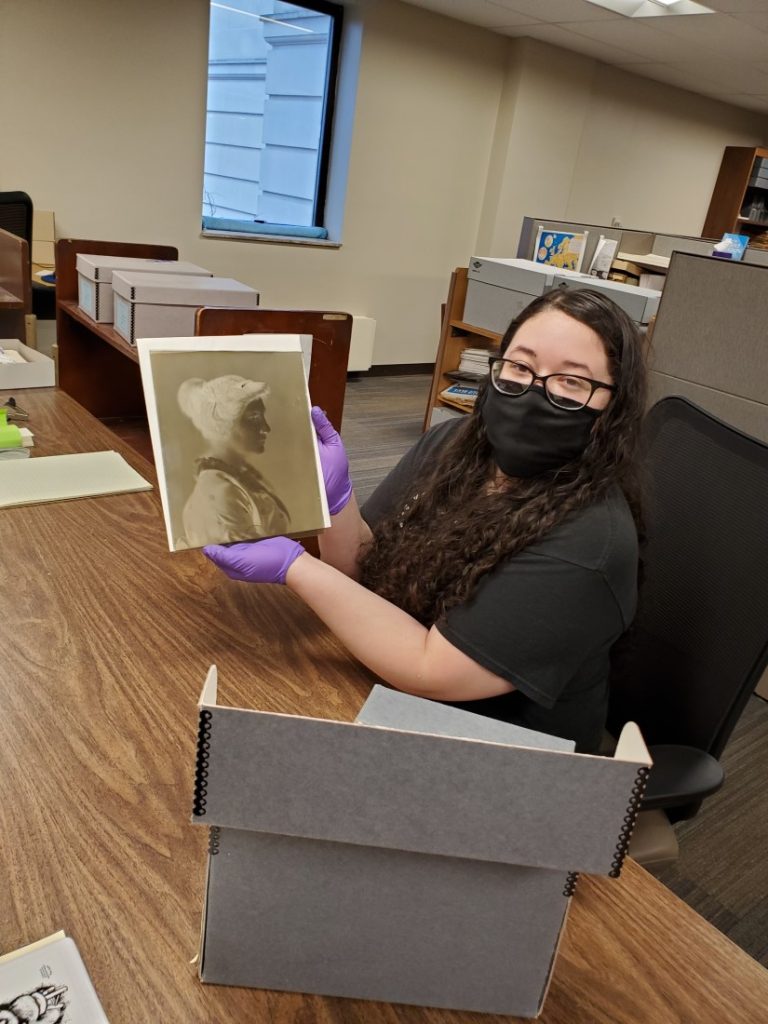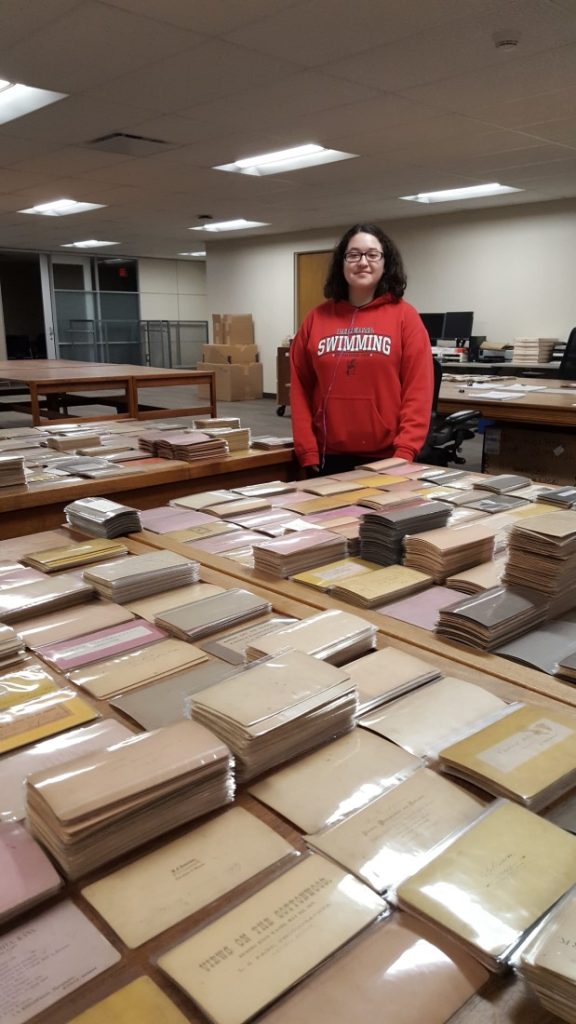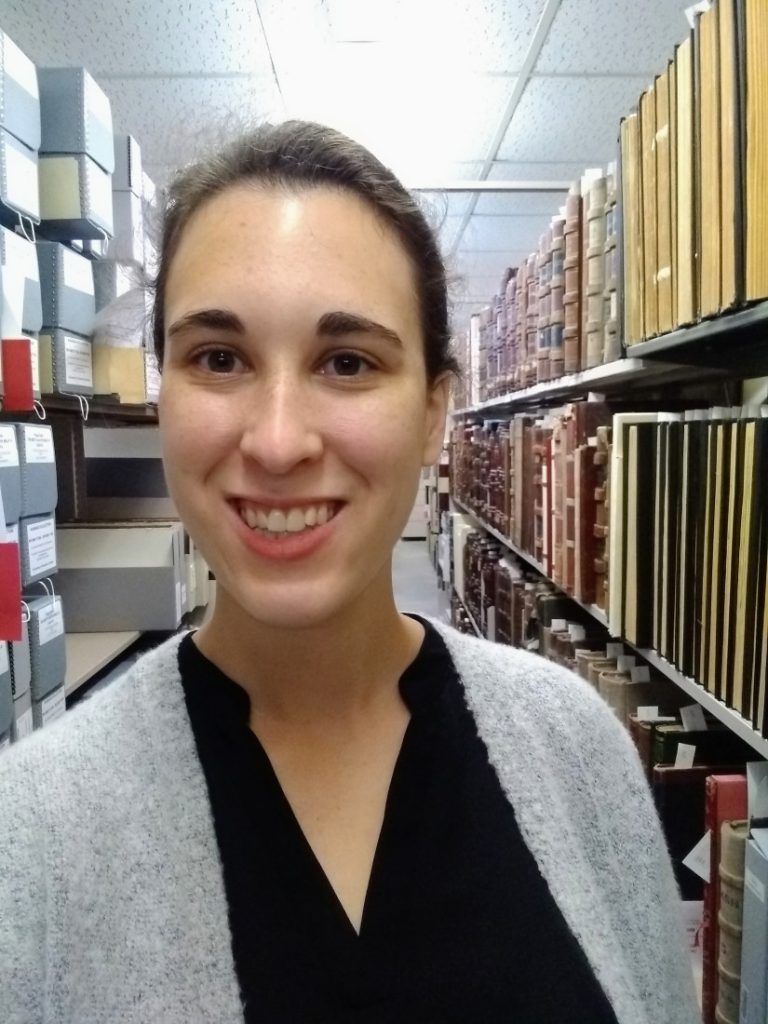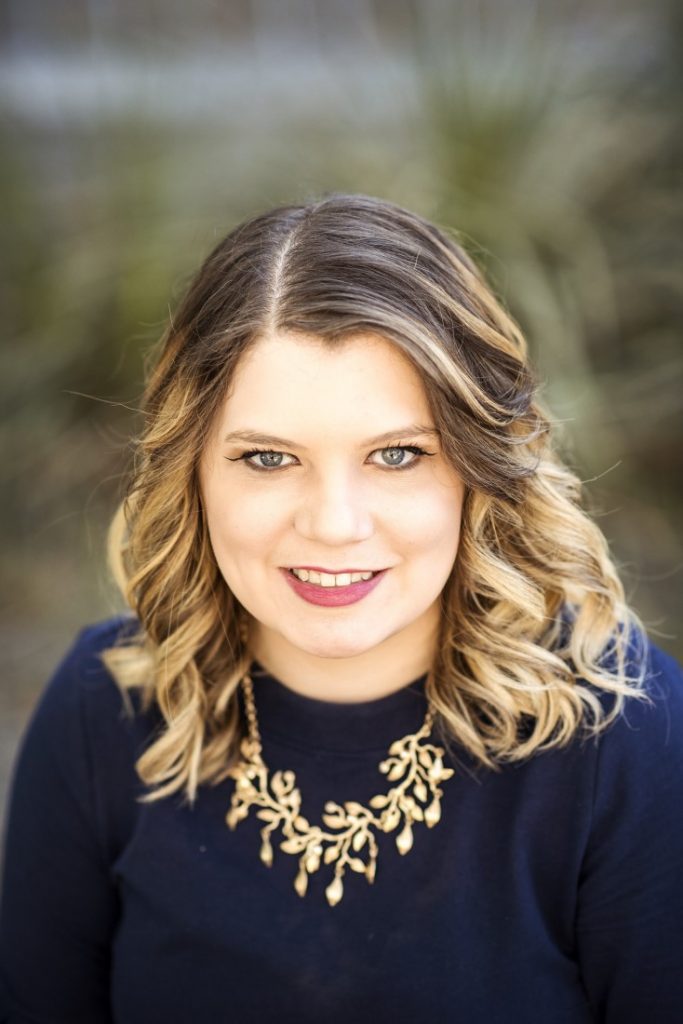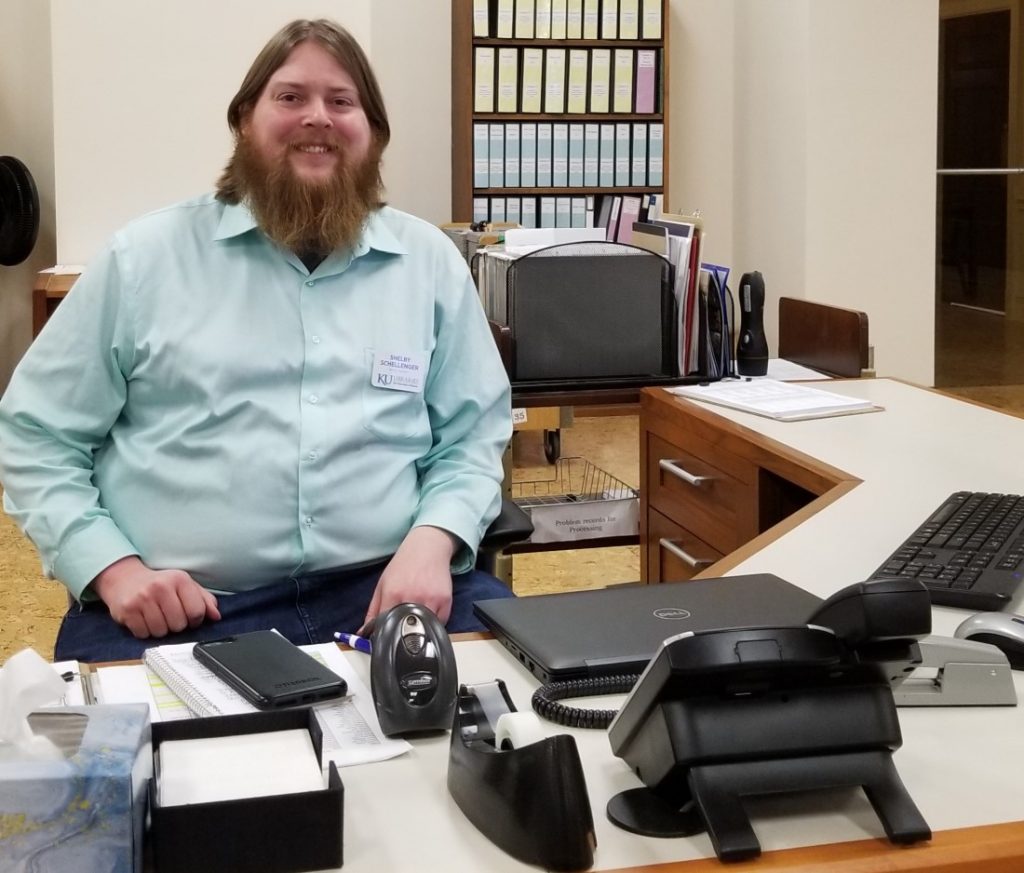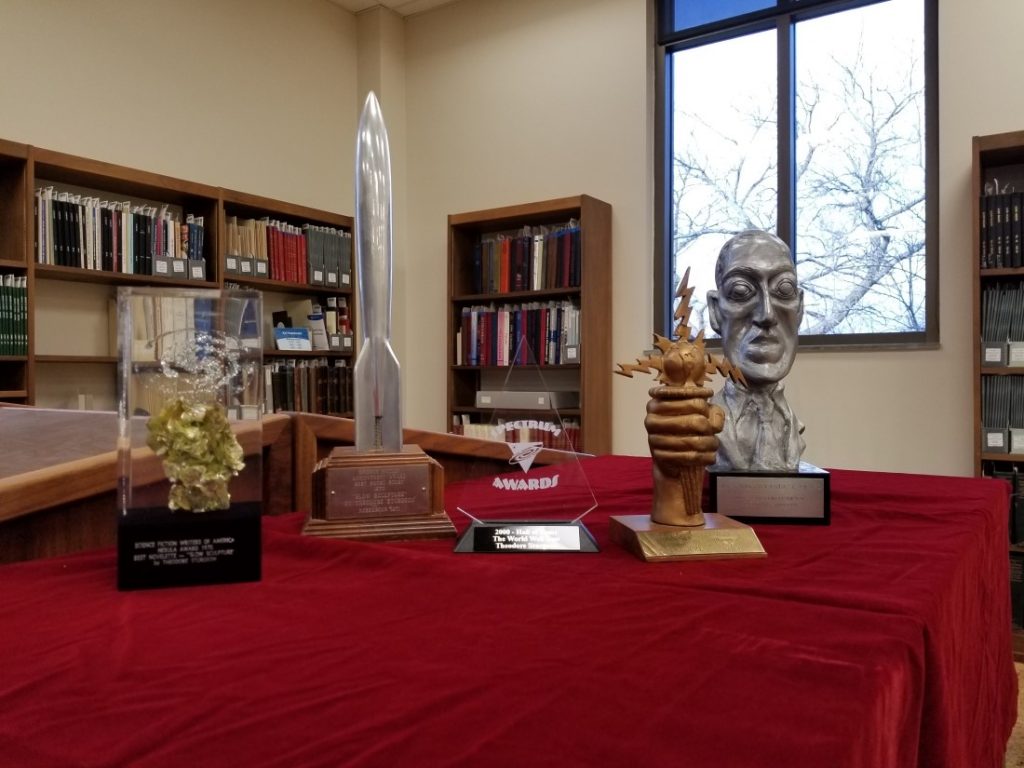This is the latest installment in a recurring series of posts introducing readers to the staff of Kenneth Spencer Research Library. Today’s profile features N. Kıvılcım Yavuz, who joined Spencer in September as Ann Hyde Postdoctoral Researcher.
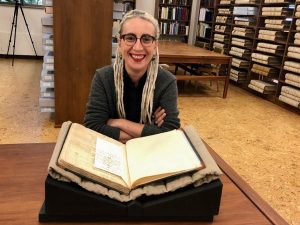
N. Kıvılcım Yavuz in Spencer Research Library’s Reading Room with MS E71.
Where are you from?
I was born
in Turkey and grew up there, but I spent the past eight years in the United
Kingdom and Denmark, doing a PhD in Medieval Studies and working at the
Universities of Leeds and Copenhagen before moving to Lawrence, KS and starting
work at the Spencer Research Library this past September.
What does your job at Spencer entail?
I am the
first Ann Hyde Postdoctoral Researcher of the Spencer Research Library. The
position was created thanks to an endowment by Alexandra Mason, former Spencer
Librarian, in honor of Ann Hyde, former Manuscripts Librarian at Spencer who
specialized in medieval manuscripts. I work with the two Special Collections
librarians Elspeth Healey and Karen Cook and my job entails making medieval
and early modern manuscripts more accessible to the wider scholarly community
and the public by conducting research and creating detailed catalog records as
well as enhancing the visibility of the excellent special collections we have
here, especially through digital means, social media and other outreach
activities.
How did you come to work in special collections and archives?
My background is in Comparative Literature and I have always been
interested in the concept of rewriting and repurposing of old stories in new
contexts. I discovered the world of manuscripts during my master’s in Medieval
Studies at the University of Leeds and did my thesis on two fifteenth-century
historical roll manuscripts. It was an amazing experience to work on
manuscripts that hardly anyone had looked at in the last century. My work with
manuscripts continued with my PhD studies, also at Leeds. It was then that I
came to understand even more fully the central importance of the material
context of the text, and that every time a text is copied it became a new work.
It was impressed on me that when looking at handwritten materials we need to
change our modern expectations about a text being fixed and having a fixed
meaning. Only in this way can we appreciate the scribal practices and the
mindset of the medieval and early modern scribes and compilers. During visits
to manuscript archives such as the National Library of France and the Vatican
Library, I developed a deep appreciation not only about manuscripts themselves but
also about collection development and conservation practices. I became more and
more interested in how manuscripts were put together and used over time and how
they travelled from one place to the other, changing hands across centuries. I
also noticed how difficult it is to access information about manuscripts,
because catalog information was incomplete or inaccurate, was stored in different
places, or had not been recorded at all. Since I completed my doctoral studies,
I have been conducting research exclusively on manuscripts in special
collections and archives in Europe and most of this work is geared towards
making these manuscripts better known and more accessible. I am so happy now
that I have the opportunity to work at a US institution, because the ways in
which European manuscripts travelled across the ocean and the people involved in
their travels are an interesting research area in itself and we do not know
enough about it.
What is one of the most interesting items you’ve come across in Spencer’s collections?
The medieval and early modern manuscripts at Spencer as a whole are exceptionally interesting as they reflect the collection building efforts by the former librarians of the University of Kansas, especially during the middle decades of the last century. My specialty is in the reception of the Trojan War in the Middle Ages and I am especially interested in the history of the book, so if I had to pick one item, I would have to go with MS E71, which contains an incomplete copy of Vergil’s Aeneid.
A poem about the story of Aeneas, a Trojan who travelled to Italy after the fall of Troy and who is considered to be the ancestor of the Romans, Vergil’s Aeneid was probably the most read and most consulted classical work throughout the Middle Ages and beyond. This means that we still have surviving copies of this work by the hundreds if not the thousands. Until recently, most scholarly research was focused on early copies of texts, so this manuscript, which contains a copy from the beginning of the fifteenth century of a text that was written in the first century BCE, would not have been considered significant. What is more is that it is defective so it does not even contain the entirety of the text! But the state of the manuscript as we have it reflects a rich history of reading, writing and ownership in the past five hundred years. Its pages are full of annotations by different hands which reflect the interests of the readers and users of this handwritten book at particular points in time.
The
history of the manuscript, which probably originates from Italy, is also
significant. MS E71 is part of a larger gift from Robert T. Aitchison (1887-1964), along with 42 printed editions of
Vergil’s works. A native Kansan, Aitchison was an artist and a book collector,
and served as the president and director of the Kansas Historical Society among
other things. Formerly, the manuscript belonged to Sir Thomas Phillipps
(1792–1872), who owned the largest collection of handwritten material in the
nineteenth century and who is recorded to have said that he wanted to own one
of every book in the world. This is all to say that there are great things to
discover and sometimes, the real gems are not the shiniest ones.
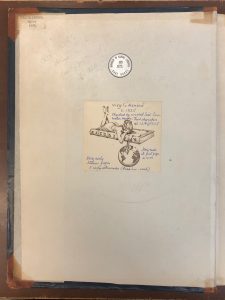
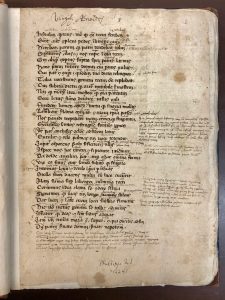
Image 1 Bookplate of Robert T. Aitchison in the middle of the front pastedown of MS E71 (a manuscript copy of Vergil’s Aeneid. Italy, early 1400s). The ticket of the binder, George Bretherton, is also visible on the top left corner indicating that the current binding had been done for Sir Thomas Phillipps in 1847. Click image to enlarge.
Image 2 Sir Thomas Phillipps’s handwritten note on the recto of the first leaf of MS E71 (“Phillipps MS 12281”) along with other annotations on the text by different previous hands. Click image to enlarge.
What part of your job do you like best?
I enjoy
discovering new, previously unnoticed things in manuscripts. In the past
decades the interest in manuscripts solely as carrier of texts has shifted. We
now know that there is more to discover when looking at handwritten artifacts:
what is it made of, how was it made, what kind of processes it went through, what
kind of materials was used, where did the materials come from, who was involved
in the making, who was it made for, how much did it cost, what was the purpose
of it, who read it over the years, who owned it until it became part of its
current collection and so on. So much to discover that makes manuscripts into
living creatures and not merely the carriers of texts!
What are some of your favorite pastimes outside of work?
I love cooking
and gardening. I also like visiting new places and meeting new people, even
though I find the airline travel tedious. Every year, I try to go to a place I
have never been before; often this involves a visit to a new library. For
example, last year I taught at a summer school in Reykjavik (Iceland) and
consulted manuscripts in Milan (Italy) and Stuttgart (Germany) and earlier this
year I vacationed in Marrakesh (Morocco) and taught a class and looked at
manuscripts at the University Library in Leipzig (Germany).
What piece of advice would you offer a researcher walking into Spencer Research Library for the first time?
Just remember that we are here to help. Do not hesitate to ask questions. If you are working on primary sources, let the manuscripts guide your research. Keep an open mind and you never know what unexpected thing you will find!
N. Kıvılcım Yavuz
Ann Hyde Postdoctoral Researcher
